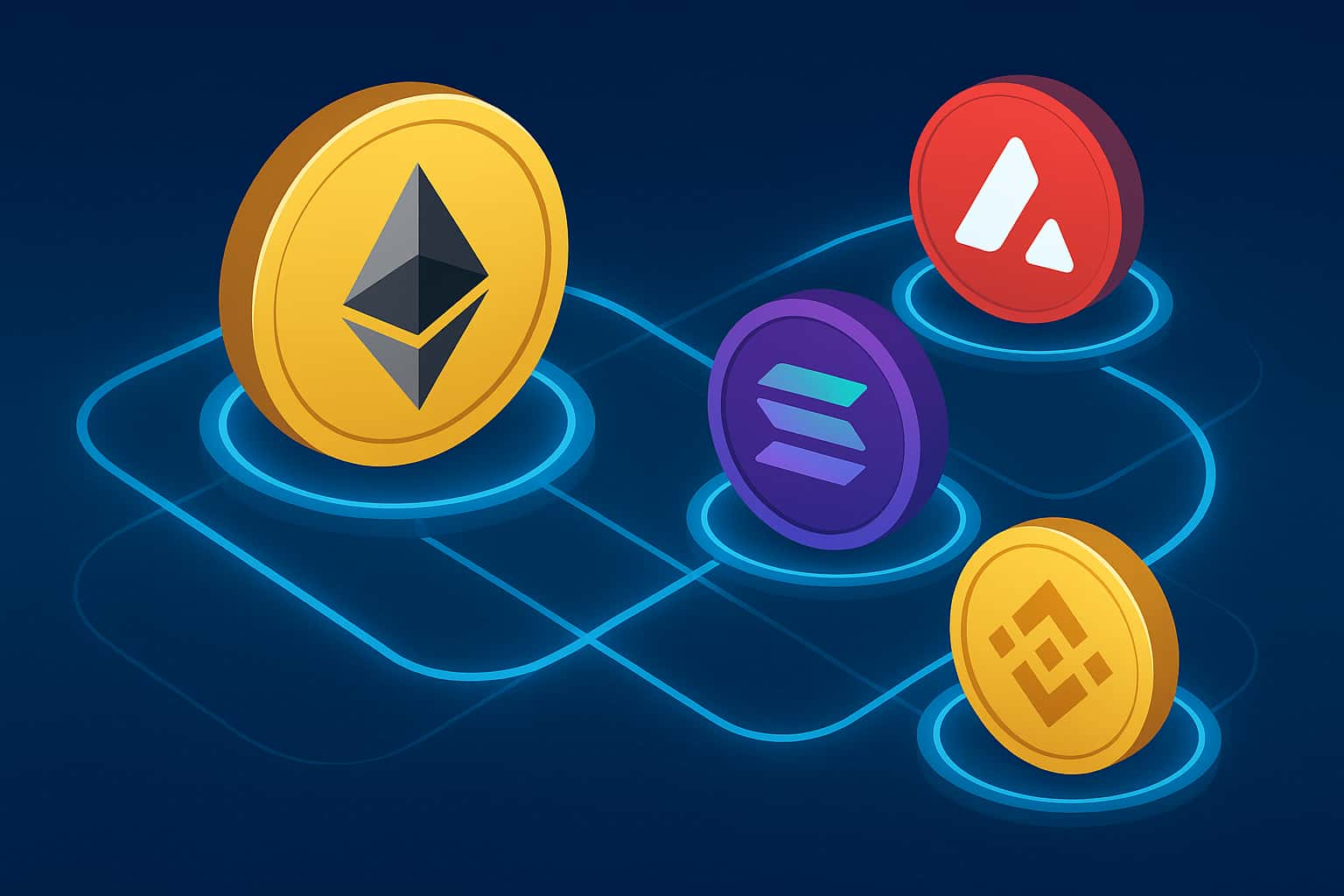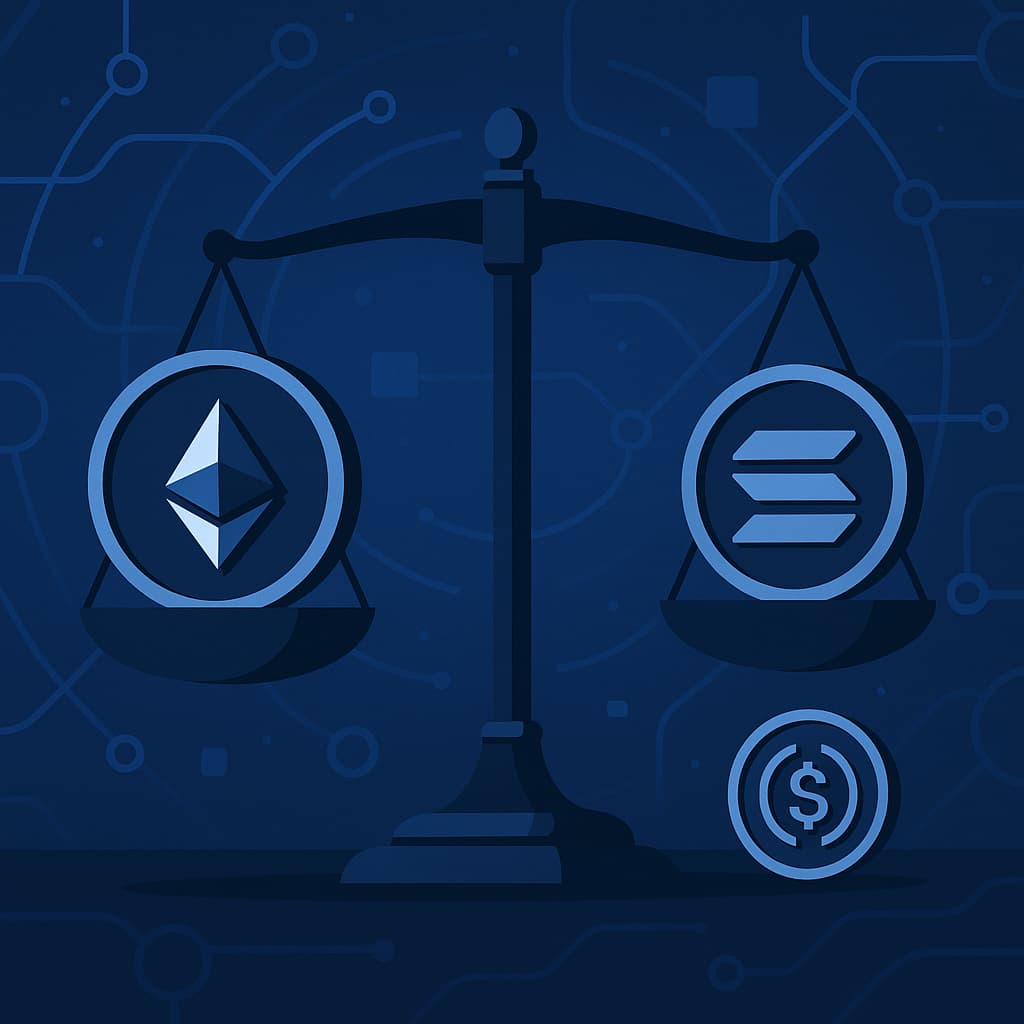-
In the rapidly evolving landscape of blockchain development, the debate between modular and monolithic architectures has gained significant traction. As businesses seek scalable, efficient, and adaptable blockchain solutions, understanding the nuances between these two architectural paradigms becomes crucial. This comprehensive exploration delves into the intricacies of modular blockchain, highlighting its advantages over traditional monolithic systems, and elucidating why businesses are increasingly gravitating towards modular designs.
Understanding Blockchain Architectures
Before delving into modular versus monolithic architectures, it's essential to comprehend what these terms signify in the context of blockchain technology.
Monolithic Blockchain Architecture
A monolithic blockchain architecture is an all-in-one system where all components—consensus, data availability, execution, and networking—are tightly integrated into a single layer. Bitcoin and Ethereum, in their original forms, exemplify monolithic designs where every node participates in every aspect of the network's operation.
Key Characteristics:
- Integrated Layers: All functionalities are bundled together.
- Uniform Responsibility: Each node handles consensus, data processing, and transaction execution.
- Simplified Design: Easier to implement initially due to its unified structure.
Modular Blockchain Architecture
In contrast, a modular blockchain architecture decomposes the system into distinct, specialized layers or modules, each responsible for a specific function. This separation allows for greater flexibility, scalability, and customization, as each layer can evolve independently.
Key Characteristics:
- Layered Structure: Distinct layers for consensus, data availability, execution, and networking.
- Specialized Roles: Each layer focuses on a particular aspect of the blockchain's operation.
- Enhanced Scalability: Ability to scale individual components without affecting the entire system.
Also, Read | Unveiling the Potential Layer 3 Blockchain Development
The Evolution from Monolithic to Modular
The shift from monolithic to modular architectures is driven by the need to address the inherent limitations of monolithic systems, especially as blockchain applications become more complex and demand higher performance.
Limitations of Monolithic Architectures
- Scalability Constraints: Monolithic blockchains often struggle to scale efficiently because every node must process every transaction, leading to bottlenecks as the network grows.
- Limited Flexibility: Upgrading or modifying one aspect of the system can necessitate changes across the entire architecture, making innovation slow and cumbersome.
- Resource Intensive: High computational and storage requirements limit the participation of nodes, potentially centralizing the network.
Advantages of Modular Architectures
- Scalability: By decoupling layers, each component can scale independently. For example, a dedicated data availability layer can handle increased data throughput without impacting consensus mechanisms.
- Flexibility and Upgradability: Individual layers can be updated or replaced without overhauling the entire system, fostering innovation and adaptability.
- Resource Efficiency: Specialized layers can optimize resource usage, allowing for more nodes to participate and enhancing decentralization.
- Enhanced Security: Isolation of functions can reduce attack surfaces, as compromising one layer doesn't necessarily expose others.
Also, Check | Layer 0 Blockchain Development | The Foundation of the Future
Core Components of Modular Blockchain
A modular blockchain typically consists of several distinct layers, each responsible for a specific function. Understanding these layers is pivotal to appreciating the modular approach's efficacy.
1. Consensus Layer
The consensus layer is responsible for validating transactions and securing the network against malicious actors. In a modular architecture, consensus is decoupled from execution and data availability, allowing for specialized consensus mechanisms that can be optimized independently.
Examples:
- Proof of Stake (PoS)
- Delegated Proof of Stake (DPoS)
- Byzantine Fault Tolerance (BFT)
2. Data Availability Layer
This layer ensures that all transaction data is accessible and verifiable by the network participants. It handles the distribution and storage of data, ensuring transparency and integrity.
Key Functions:
- Data propagation across the network
- Ensuring data is available for verification
- Facilitating light clients and data retrieval
3. Execution Layer
The execution layer handles the actual processing of transactions and smart contract execution. By isolating execution, this layer can be optimized for performance and support complex computations without burdening the consensus or data availability layers.
Features:
- Smart contract execution
- Transaction processing
- State management
4. Networking Layer
The networking layer manages the communication between nodes, ensuring efficient data transmission and maintaining network robustness. It handles peer discovery, data routing, and latency optimization.
Responsibilities:
- Node connectivity
- Data transmission protocols
- Network security measures
Also, Discover | Exploring Solana Blockchain Development for Enterprises
Benefits of Adopting a Modular Blockchain
Transitioning to a modular blockchain architecture offers numerous advantages, particularly for businesses seeking robust, scalable, and flexible solutions.
Enhanced Scalability
Modular blockchains can handle increased demand more gracefully by scaling individual layers independently. For instance, if transaction volume surges, only the execution layer may require scaling, leaving consensus and data availability layers unaffected.
Increased Flexibility and Innovation
With distinct layers, developers can innovate within specific components without disrupting the entire system. This fosters a more dynamic ecosystem where new consensus algorithms, data availability solutions, or execution engines can be integrated seamlessly.
Improved Security
Isolating functions into separate layers can mitigate security risks. A vulnerability in the execution layer, for example, does not necessarily compromise the consensus or data availability layers, enhancing the overall security posture.
Optimized Resource Utilization
Specialization allows each layer to optimize its resource usage, leading to more efficient operations. This can reduce the computational and storage burdens on individual nodes, promoting greater decentralization and participation.
Tailored Solutions for Diverse Use Cases
Different applications may have unique requirements. Modular architectures allow businesses to customize specific layers to meet their needs, whether it's higher transaction throughput, specialized smart contract capabilities, or enhanced data privacy.
Challenges and Considerations
While modular blockchains offer significant advantages, they also introduce new challenges that businesses must navigate.
Complexity in Integration
Decoupling functionalities into separate layers can increase the system's overall complexity. Ensuring seamless communication and interoperability between layers requires sophisticated design and robust protocols.
Potential for Increased Latency
Multiple layers may introduce additional communication steps, potentially increasing transaction processing times. Optimizing inter-layer communication is essential to mitigate latency issues.
Governance and Coordination
Managing updates and changes across multiple layers necessitates effective governance mechanisms. Coordinating enhancements and ensuring compatibility between layers can be more complex compared to monolithic systems.
Security Across Layers
While modularity can enhance security, it also requires each layer to maintain its own security measures. Ensuring consistent security standards across all layers is vital to prevent vulnerabilities.
Also, Discover | Top Blockchain Development Companies | Oodles Blockchain
Real-World Applications of Modular Blockchains
Modular blockchain architectures are gaining traction across various industries, each leveraging the architecture's benefits to address specific business needs.
Decentralized Finance (DeFi)
DeFi platforms benefit from modularity by enabling scalable and flexible financial services. Specialized execution layers can handle complex smart contracts, while dedicated data availability layers ensure transparency and accessibility.
Supply Chain Management
In supply chain applications, modular blockchains can provide tailored solutions for tracking, verification, and data sharing. The separation of layers allows for optimized data handling and secure transaction processing.
Enterprise Solutions
Businesses seeking blockchain integration for operations, such as identity management or asset tracking, can leverage modular architectures to customize the system according to their specific requirements, ensuring scalability and security.
Internet of Things (IoT)
IoT applications require efficient data handling and secure transactions. Modular blockchains can offer specialized data availability and execution layers to manage high-volume data streams and device interactions effectively.
Leading Modular Blockchain Platforms
Several blockchain projects have embraced modular architectures, setting benchmarks for the industry's evolution.
Ethereum 2.0
Ethereum's transition to Ethereum 2.0 exemplifies the shift towards modularity. By separating the consensus layer (Beacon Chain) from execution layers (Shard Chains), Ethereum aims to enhance scalability and performance.
Polkadot
Polkadot's architecture features a central Relay Chain for consensus and multiple parachains for specialized functions, embodying the modular approach by allowing diverse blockchains to interoperate within a unified ecosystem.
Cosmos
Cosmos employs a hub-and-spoke model, where the Cosmos Hub manages interoperability, and individual zones handle specific functionalities. This design promotes modularity and scalability across the network.
Celestia
Celestia focuses on data availability and consensus, allowing execution layers to operate independently. This separation facilitates the development of customized execution environments without compromising data integrity.
Also, Check | How ChatGPT Augments Blockchain Development
Transitioning to Modular Blockchain: A Strategic Approach
For businesses considering the shift to a modular blockchain architecture, a strategic approach is essential to navigate the complexities and maximize the benefits.
Assessing Business Requirements
Understanding the specific needs of the business is paramount. Evaluate factors such as transaction volume, scalability requirements, security considerations, and customization needs to determine the optimal modular configuration.
Selecting the Right Components
Choose appropriate layers and technologies that align with business objectives. This may involve selecting consensus mechanisms, data availability solutions, execution environments, and networking protocols that best fit the use case.
Ensuring Seamless Integration
Implement robust integration strategies to facilitate seamless communication between layers. Utilize standardized protocols and APIs to enhance interoperability and reduce integration complexities.
Implementing Robust Governance
Establish comprehensive governance frameworks to manage updates, coordinate changes, and ensure consistency across all layers. Effective governance is crucial for maintaining system integrity and facilitating continuous improvement.
Prioritizing Security
Adopt stringent security measures for each layer, ensuring that vulnerabilities are addressed independently. Regular security audits and proactive threat mitigation strategies are essential to safeguard the modular architecture.
Fostering Collaboration and Innovation
Encourage collaboration among development teams responsible for different layers. Promote innovation by allowing specialized teams to focus on their respective components, fostering a dynamic and resilient blockchain ecosystem.
You may also like | A Guide to Hiring the Right Blockchain Development Company
Future Trends in Modular Blockchain
The modular blockchain landscape is poised for continued evolution, driven by technological advancements and emerging business needs.
Enhanced Interoperability
Future modular blockchains will likely emphasize greater interoperability between layers and across different blockchain networks, facilitating seamless data and value transfer.
Increased Customization
As businesses seek more tailored solutions, modular architectures will offer deeper customization options, enabling highly specialized blockchain deployments that cater to niche requirements.
Advanced Scalability Solutions
Innovations in layer-specific scalability solutions, such as sharding and layer-2 protocols, will further enhance the performance and capacity of modular blockchains.
Integration with Emerging Technologies
Modular blockchains will increasingly integrate with other emerging technologies, such as artificial intelligence, Internet of Things (IoT), and decentralized finance (DeFi), creating synergistic ecosystems that drive innovation.
Strengthened Security Protocols
Ongoing advancements in security protocols will bolster the resilience of modular blockchains, addressing evolving threats and ensuring robust protection across all layers.
You might be interested in | Blockchain Development for the Aviation Industry Solutions
Conclusion
The transition from monolithic to modular blockchain architectures represents a pivotal shift in the blockchain paradigm, offering enhanced scalability, flexibility, and security. For businesses navigating the complexities of blockchain integration, embracing modularity provides a strategic advantage, enabling the development of customized, high-performance solutions tailored to specific needs. As the blockchain ecosystem continues to mature, modular architectures will play a crucial role in shaping the future of decentralized technologies, driving innovation, and unlocking new opportunities across industries.
Frequently Asked Questions (FAQ)
1. What is the primary difference between modular and monolithic blockchain architectures?
Answer: The primary difference lies in their structural design. Monolithic blockchains integrate all functionalities—consensus, data availability, execution, and networking—into a single layer. In contrast, modular blockchains decompose these functions into separate, specialized layers, allowing each to operate and scale independently.
2. Why are businesses moving towards modular blockchain architectures?
Answer: Businesses are shifting to modular architectures to achieve greater scalability, flexibility, and security. Modular designs allow for independent scaling of different components, easier upgrades and innovations, optimized resource utilization, and enhanced security by isolating functionalities.
3. Can you provide examples of modular blockchain platforms?
Answer: Yes, notable examples include Ethereum 2.0, which separates consensus and execution layers; Polkadot, which uses a central Relay Chain with multiple parachains; Cosmos, which employs a hub-and-spoke model; and Celestia, which focuses on data availability and consensus layers independently.
4. What are the challenges associated with implementing a modular blockchain?
Answer: Implementing a modular blockchain can introduce complexities in integration, potential latency due to inter-layer communication, the need for robust governance and coordination mechanisms, and ensuring consistent security measures across all layers.
5. How does modularity enhance blockchain scalability?
Answer: Modularity enhances scalability by allowing each layer to scale independently based on its specific demands. For example, if transaction volume increases, only the execution layer may need to scale, without affecting the consensus or data availability layers, thus efficiently managing resources and maintaining performance.
6. Is modular blockchain suitable for all types of blockchain applications?
Answer: While modular blockchains offer significant advantages, they may not be necessary for all applications. They are particularly beneficial for complex, high-demand use cases that require scalability, flexibility, and specialized functionalities. Simpler applications might function effectively on monolithic architectures.
7. How does a modular blockchain improve security?
Answer: By isolating different functions into separate layers, modular blockchains reduce the attack surface. A vulnerability in one layer does not directly compromise others, enhancing overall security. Additionally, specialized security measures can be applied to each layer, strengthening the system's resilience.
8. What is the role of the data availability layer in a modular blockchain?
Answer: The data availability layer ensures that all transaction data is accessible and verifiable by network participants. It handles data distribution, storage, and retrieval, ensuring transparency and integrity across the blockchain network.
9. How do modular blockchains support innovation?
Answer: Modular architectures allow developers to innovate within specific layers without impacting the entire system. This separation fosters the development of new consensus mechanisms, data availability solutions, or execution engines, promoting a dynamic and adaptable blockchain ecosystem.
10. What should businesses consider when transitioning to a modular blockchain?
Answer: Businesses should assess their specific requirements, select appropriate layers and technologies, ensure seamless integration between components, implement robust governance frameworks, prioritize security across all layers, and foster collaboration among development teams to effectively transition to a modular blockchain architecture.
If you want to explore the potential of modular blockchain development, connect with our skilled blockchain developers to get started.

Our Offices
INDIA
Emaar Digital Greens, Sector 61,
Gurugram, Haryana
122011.
Welldone Tech Park,
Sector 48, Sohna road,
Gurugram, Haryana
122018.















